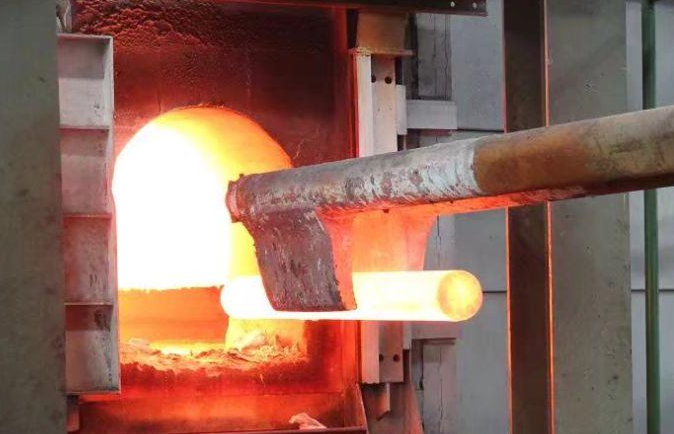
Raw Material and Production Process of Steel
Steel production process:
1. The source of the steel pipe
The source of steel is iron ore, which is the form of iron element (Fe) in nature. Pure iron does not exist in nature. Iron ore is mainly divided into magnetite, hematite and limonite. species, these are oxides of iron, the difference lies in how they are oxidized. The higher the iron content in iron ore, the better. Theoretically, the highest iron content in iron ore is about 72%, and the iron content above 60% is called iron-rich ore. Iron ore is first reduced into iron (milled iron) in the furnace, and then sent to the steelmaking furnace for decarburization and refining into steel. Scrap steel can also be smelted and regenerated in the steelmaking furnace.

2. Ironmaking
The process of refining iron ore into iron in a furnace (blast furnace) is called ironmaking. During ironmaking, iron ore, coke, limestone, etc. are alternately input from the top of the blast furnace, and the air heated by the hot blast furnace is blown in from the tuyeres at the lower part of the blast furnace. As it rises in the furnace, carbon monoxide reduces the iron ore; the smelted pig iron flows out from the taphole under the furnace, and is temporarily stored in the iron mixing furnace and transported to the steelmaking workshop.
3. Steelmaking
The pig iron melted from the blast furnace has high carbon content (C content above 3%), and there are many impurities such as silicon (Si), phosphorus (P), sulfur (S), and the product is hard and brittle. The process of reducing impurities into strong and tough steel products is called steelmaking. In addition to pig iron and steel scrap, steelmaking raw materials also include flux for removing impurities, quicklime, fluorite, deoxidizer alloy iron, etc., to improve the quality of steel. Steelmaking methods mainly include converter and electric furnace. Usually iron and steel products are made by reducing iron ore, melting it into pig iron (ironmaking), refining pig iron into steel (steelmaking), and rolling and processing the steel to make various steel products.
The technological process of steel production: iron ore-blast furnace ironmaking-steelmaking-steel rolling-finished products
General steel is made into products of different properties and shapes according to the purpose of use, which are so-called steel products. Steel products in a broad sense include cast iron, cast steel, forged steel products and processed steel products. Before discussing the raw materials of steel, we must first figure out what is the difference between steel and iron? Are there different ingredients?
In daily life, people always refer to steel and iron together as "steel". It can be seen that steel and iron should be a kind of substance; in fact, from a scientific point of view, steel and iron have a little Different, their main components are all iron, but the amount of carbon contained is different. We usually call "pig iron" with a carbon content above 2%, and "steel" with a carbon content below this value. Therefore, in the process of smelting iron and steel, iron-containing ore is first smelted into molten pig iron in a blast furnace (blast furnace), and then the molten pig iron is put into a steelmaking furnace to be refined into steel. Then, steel (steel billet or strip) is used to make steel pipes, for example, carbon steel billets can be made into steel pipes with hollow sections through hot rolling and cold rolling processes (seamless tubes)
The manufacturing process of seamless steel tubes is mainly divided into two major steps:
1. Hot rolled seamless steel tube: round tube billet → heating → piercing → three-roll cross rolling, continuous rolling or extrusion → stripping → sizing (or reducing) → cooling → straightening → hydraulic test (or flaw detection) → marking → warehousing
2. Cold drawn (rolled) seamless steel tube: round tube blank→heating→piercing→heading→annealing→pickling→oiling (copper plating)→multi-pass cold drawing (cold rolling)→blank tube→heat treatment→straightening → hydrostatic test (flaw detection) → marking → storage.
The raw materials needed for the production of iron and steel are divided into four categories and discussed separately: the first category discusses various iron-containing ore raw materials; the second category discusses coal and coke; The flux (or flux) of slag, such as limestone, etc.; the last category is various auxiliary raw materials, such as scrap steel, oxygen, etc.


